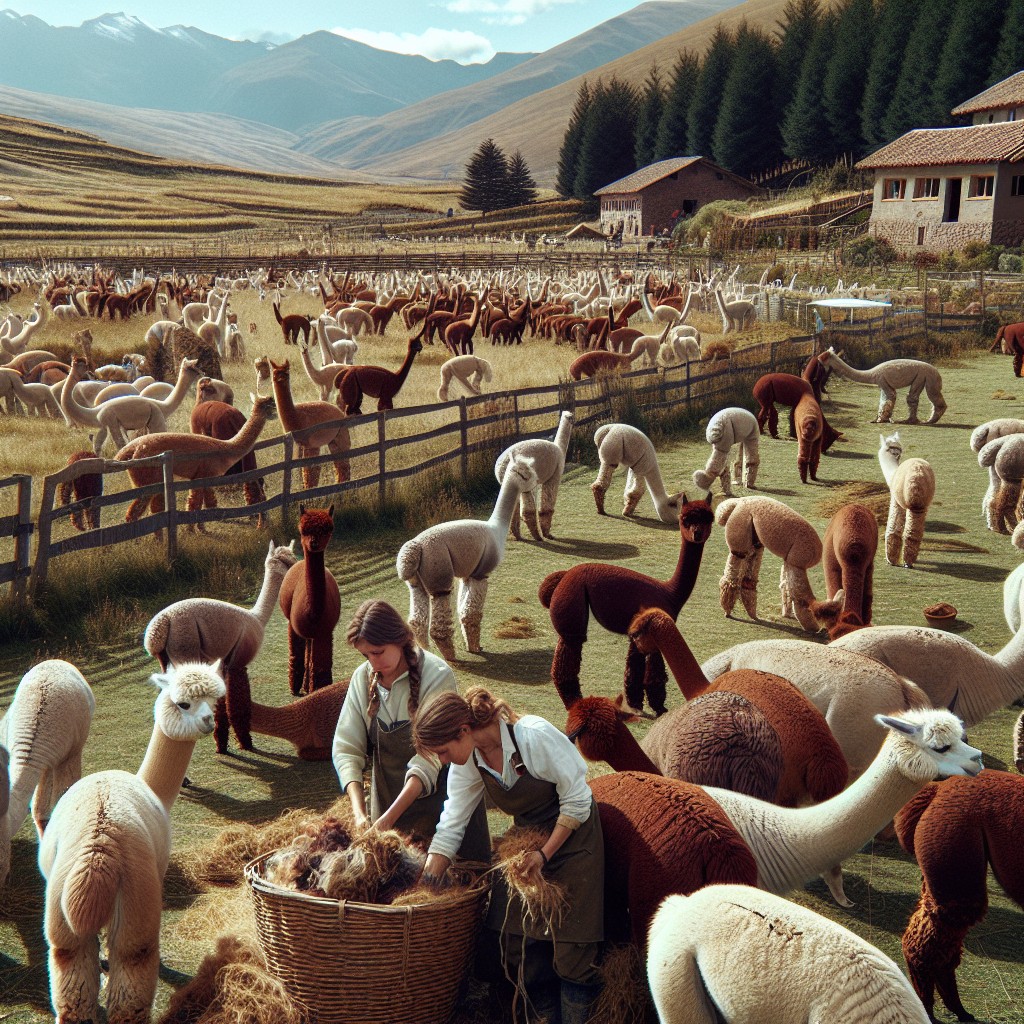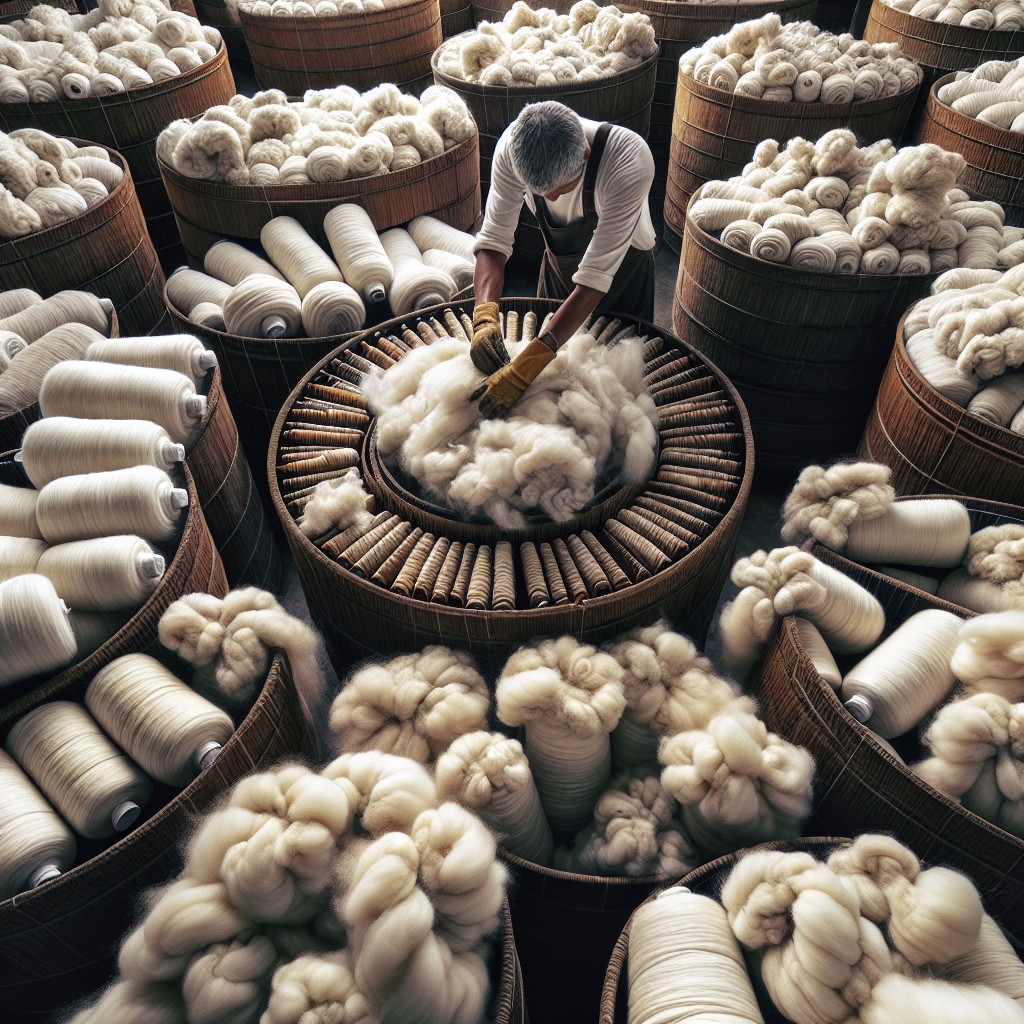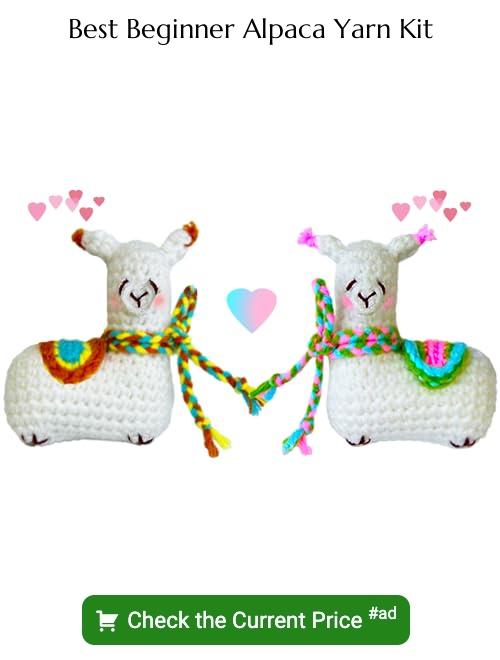Discover the process of creating your own alpaca yarn because it unlocks endless possibilities in crafting unique, luxurious, and warm handmade items.
Making alpaca yarn is a rewarding process that involves shearing, cleaning, carding, and spinning the alpaca fleece. This article will guide you through each step, ensuring you understand the intricacies involved in creating soft, luxurious alpaca yarn.
From the proper way to shear alpacas to get the best quality fleece, to cleaning and carding techniques that maintain the fiber’s integrity, and finally the spinning process to create your yarn, every detail is covered.
So whether you’re a seasoned spinner or a beginner looking to dive into the world of yarn-making, this comprehensive guide will be your go-to resource.
Key takeaways:
- Choosing Alpacas for Yarn: age, density, color matter
- Alpaca Breeding Techniques: genetic selection, breeding cycle, pregnancy care
- Proper Alpaca Shearing Methods: tools, timing, fiber quality
- Preparation of Alpaca Fleece for Spinning: cleaning, sorting, drying, teasing
- Alpaca Fleece Carding Techniques: use of carders, loading, carding motion, blending, rolling
Choosing Alpacas for Yarn Production

To yield the best quality yarn, consider age, fiber density, and color when selecting Alpacas. Younger Alpacas, ideally under three years old, usually provide the finest fibers.
Fiber density, another critical factor, refers to the number of hair strands per square inch – higher densities result in fuller, richer yarn.
Alpaca fiber, available in a variety of colors, offers the chance for natural, undyed yarn. However, take note that dyeing is possible and lighter shades can be more versatile for this purpose.
While these points serve as a guide, remember that each Alpaca is unique; its care and environment significantly affect the quality of the fleece they produce.
Alpaca Breeding Techniques

Critical elements of successful alpaca breeding involve selecting the right mate based on genetic traits, understanding the breeding cycle, and providing appropriate care during pregnancy.
1. Genetic selection: It’s crucial to choose mates that possess complementary characteristics to produce offspring with desirable traits, for instance, superior fleece quality and structural soundness.
2. Breeding cycle awareness: Female alpacas, or dams, do not have a fixed reproductive cycle. Instead, ovulation is often induced by mating. Familiarity with this unique trait ensures successful conception.
3. Pregnancy care: A pregnant dam should be monitored closely, with attention to nutritional needs and regular health checks to ensure a safe gestation period. This results in healthy crias (baby alpacas) that will produce high-quality fleece in the future.
The above points when executed meticulously, contribute towards an effective alpaca breeding strategy, catering to the eventual goal of superior yarn production.
Proper Alpaca Shearing Methods

To assure quality yarn, correct shearing techniques are vital. The goal is to maintain the health of the alpaca and the integrity of the fleece. Make sure your equipment is sharp and clean. Dull or dirty tools can tug at the fleece or potentially harm the animal.
Experts recommend shearing every 12-18 months, usually in the spring or early summer, to prevent the alpaca from overheating. Remember to shear in the direction of the fiber growth, usually from the backbone down towards the belly. This direction not only makes the process more comfortable for the alpaca but also ensures that the fibers remain properly aligned for the spinning process.
As you shear, pay close attention to the quality of the fleece. Areas of the body like the back and sides tend to provide the highest-quality fibers. Avoid shearing areas with coarse or short fibers. Some spots to avoid generally include the lower legs, belly, and face.
Lastly, strive to keep the alpaca calm and secure throughout the process. Your gentle approach aids in reducing the animal’s stress, ensuring a smoother shearing process and a better end product.
Preparation of Alpaca Fleece for Spinning

Before spinning, the fleece requires careful preparation. Here’s how to effectively accomplish this:
1. Cleaning: Free the fleece from any dirt or debris. A simple shake can remove most particles, but sometimes a gentle hand washing may be necessary.
2. Sorting: Separate the fibers according to quality. The finer fibers from the blanket (the sheep’s back and sides) are often the highest quality, suitable for delicate garments.
3. Drying: Lay out the cleaned and sorted fleece to dry. Avoid direct sunlight to prevent any unnecessary fiber damage.
4. Teasing: Once dry, fluff the fibers to prepare them for carding, opening up the fiber and allowing it to breathe.
Following these points ensures a well-prepared fleece, primed for spinning into quality alpaca yarn.
Alpaca Fleece Carding Techniques
After the fleece has been cleaned, it’s time to begin the carding process. Carding is essential in aligning the fibers, preparing them for spinning.
1. Use of Carders: Hand or drum carders work best for alpaca fleece. Carders have small metal teeth set that detangle and further clean the fiber.
2. Loading the Carder: Load a small amount of fiber onto one carder by brushing it lightly against the teeth.
3. Carding Motion: Move the carders back and forth in a gentle manner. Start from the bottom towards the top, aligning the fibers in the same direction.
4. Blending Fibers: For a multicolored yarn, different colored fibers can be carded together to achieve a blended effect.
5. Rolling the Fiber: Once carding is done, roll the fiber off the carders into rolags or punis. They are then ready to be spun into yarn.
Remember, patience and care are essential during the carding process, as rough handling can damage the soft alpaca fibers.
Steps in Spinning Alpaca Yarn
When spinning alpaca fiber into yarn, preparation is key. First, card it to align the fibers, which facilitates a smoother spinning process. Note, when using a drop spindle or spinning wheel, the fiber’s twist and thickness can be controlled – a gentle pull and twist give a thinner yarn, while less twist yields a thicker yarn.
Spin the fiber clockwise to add twist, called the “Z-twist”, creating the single ply. Pile these up and then spin them together in a counterclockwise direction, generating an “S-twist” for a firmer, multi-ply yarn.
Maintain steady tension throughout to ensure uniformity. Lastly, always remember to let the spun fiber rest overnight to set the twist, resulting in a well-balanced yarn.
Washing Process for Alpaca Yarn
After spinning, the yarn undergoes a crucial cleaning stage. Soaking the yarn in a basin of warm water, gently agitated with a mild detergent, helps to dislodge dirt and oils. It’s important to avoid abrupt changes in water temperature which can cause damage.
Thoroughly rinse until the water runs clear. To remove excess water, avoid wringing — instead, press the water out gently or use a salad spinner. Lay the yarn flat to air dry, reshaping as needed. However, avoid direct sunlight as it can affect the color and texture of the yarn.
Flexibility and Durability of Alpaca Yarn
Alpaca yarn is known for its exceptional versatility, lending itself well to a wide array of crafting projects. It’s lightweight, yet holds heat efficiently, making it perfect for winter garments like scarves, hats, and gloves. Furthermore, alpaca fibers are stronger than wool, ensuring the durability of the finished craft. It’s also hypoallergenic and does not itch, promoting comfort in wear.
One feature that sets it apart is its flexibility. Unlike some yarns, alpaca has an elastic nature that retains its shape even with prolonged use. It also responds well to blocking, enabling precise shaping of finished pieces.
Regardless of the project at hand, whether a snug sweater or a plush pillow, alpaca yarn brings a blend of flexibility and durability that’s hard to beat. Its characteristics allow crafters to create pieces that are not only aesthetically pleasing but also enduring and comfortable. Crafters can therefore rely on alpaca yarn to deliver on both form and function.
Tips for Knitting, Weaving, and Crocheting With Alpaca Yarn
When handling alpaca yarn, the richness and delicacy of its texture must be considered. Here are some key tips to maximize your crafting experience:
- 1. Lower Tension – Due to its elasticity, work with a relaxed grip, reducing tension on the yarn and in your stitches to prevent distortion.
- 2. Needle and Hook Size – Choose larger needles or hooks to allow the luscious threads to bloom fully and exhibit their softness and drape.
- 3. Stitches – Try simple stitch patterns as intricate or lace designs may get lost in the fluffiness of the yarn.
- 4. Washing Care – Hand wash items, in cool water with a gentle wool shampoo. Avoid agitation to prevent felting.
- 5. Drying – Lay the piece flat to dry, away from direct sunlight. This method maintains the shape and lengthens the lifespan of your alpaca yarn creation.
Follow these guidelines to maintain the beauty and longevity of your alpaca yarn creations.
FAQ
How do they make alpaca yarn?
Alpaca yarn is made by gathering alpaca fiber, separating it from the pushka, forming it into balls, and spinning it multiple times to combine threads and form stronger fibers.
Can you make yarn from alpaca?
Yes, refined alpaca fibers can be spun into yarn using traditional methods such as spinning wheels or drop spindles.
How much yarn do you get from one alpaca?
An adult alpaca typically provides around 5-10 pounds of fiber that can be converted into yarn.
What is the process of cleaning and preparing alpaca fleece for spinning?
The process of cleaning and preparing alpaca fleece for spinning involves shearing the animal, sorting and skirting the fleece to remove impurities, washing it gently with a mild detergent to remove dirt and grease, drying it completely, and carding to align the fibers for spinning.
How does the quality of alpaca fiber affect the resultant yarn?
The quality of alpaca fiber significantly influences the resultant yarn, with higher quality fiber producing softer, more durable, and luxurious yarn.
What are the different grades of alpaca yarn, and how are they determined?
The grades of alpaca yarn are determined by the fineness of the fiber, ranging from Royal Alpaca with 19 microns or less, to Medium with 26.5-29 microns in diameter, and Coarse that exceeds 32 microns.





